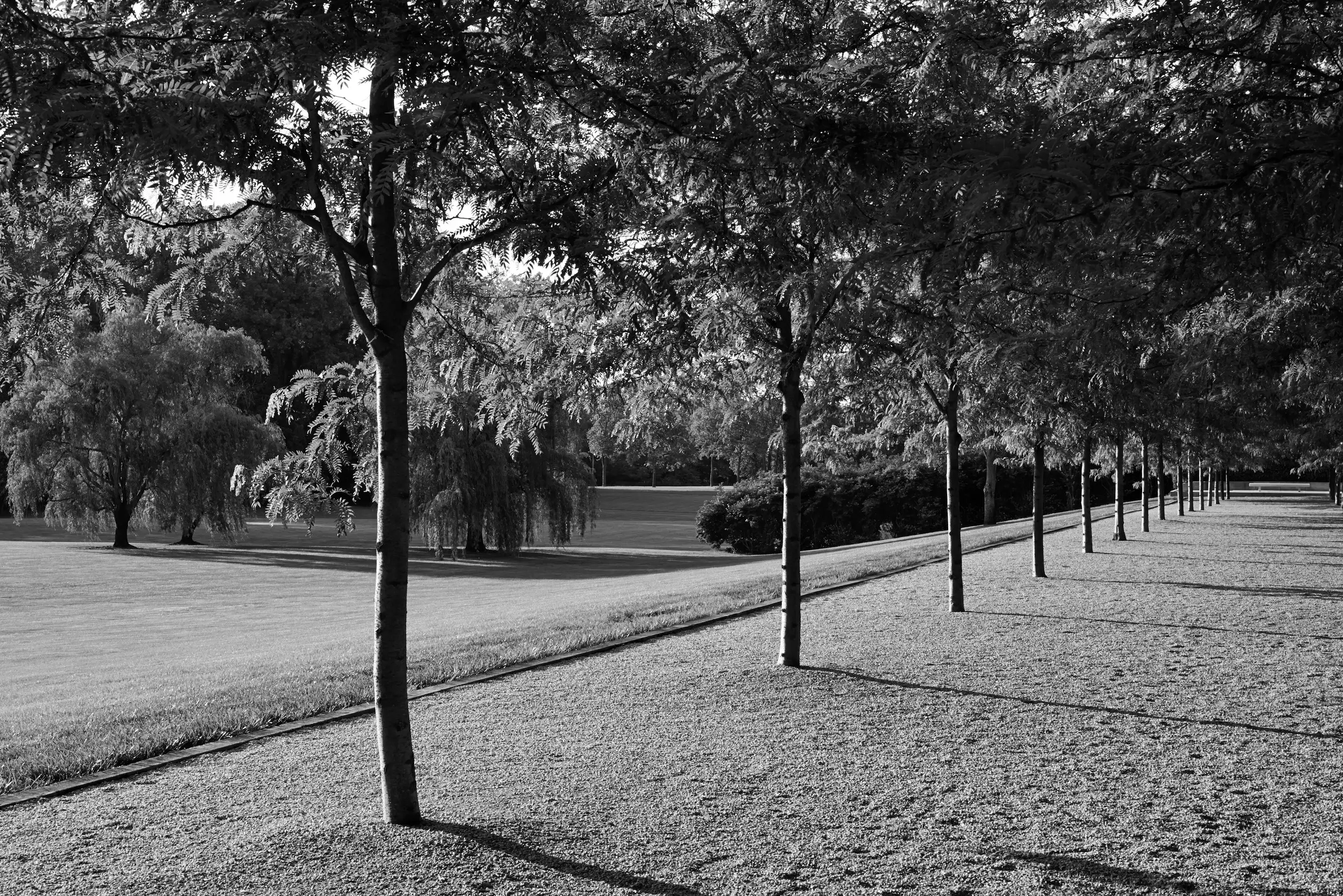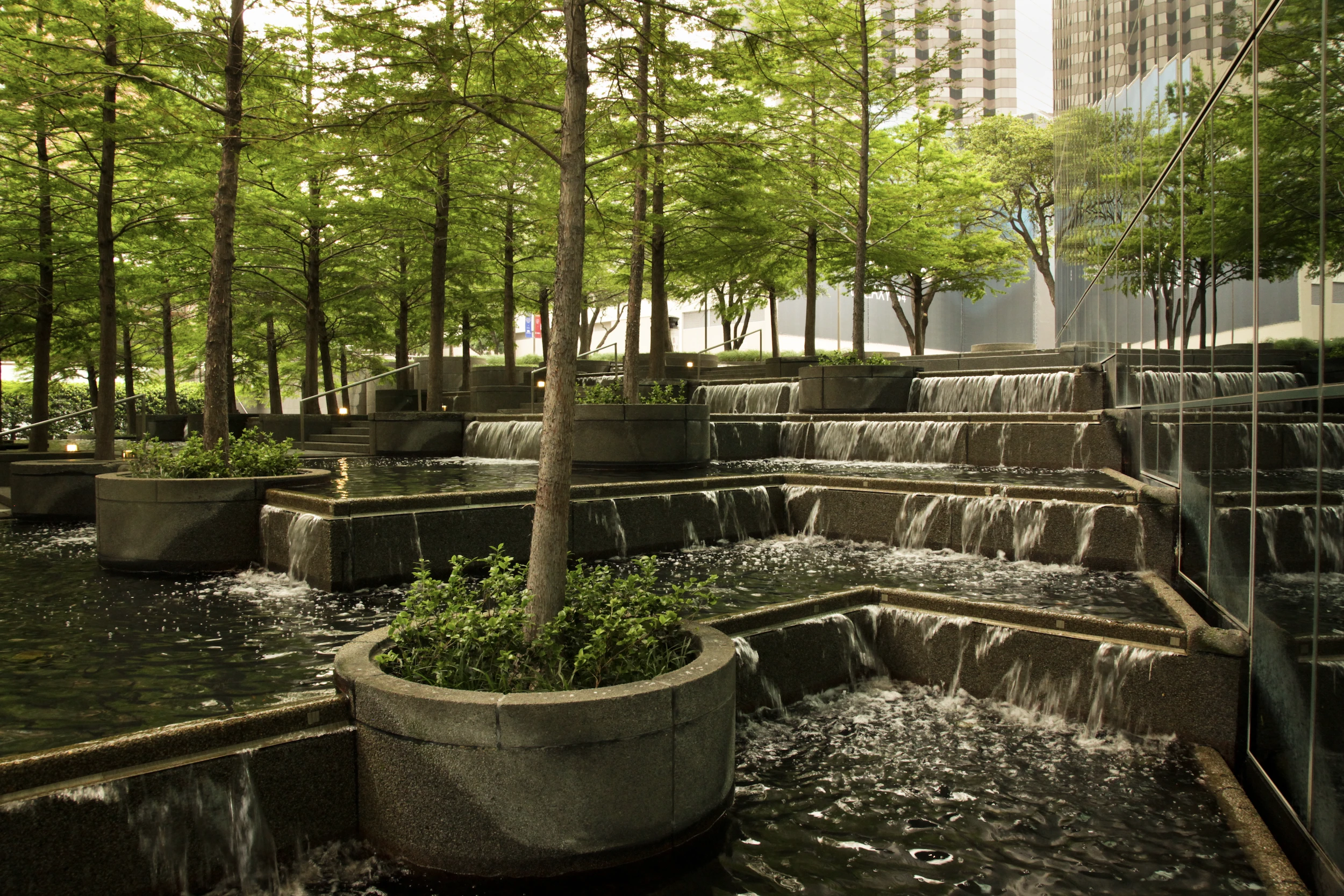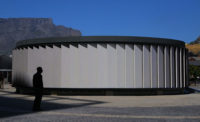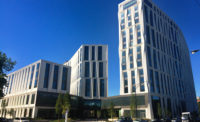The centennial of Modernist landscape architect Dan Kiley's birth in 2012 passed without even a single retrospective exhibition. Washington, D.C.-based nonprofit The Cultural Landscape Foundation (TCLF) has been working overtime to make up for that since, with a revamped and expanded incarnation of their 2013 traveling show, The Landscape Architecture of Dan Kiley, now appearing at ABC Stone’s exhibition space in Greenpoint, Brooklyn.
Landscape architects whose names aren't Olmsted are reliably underappreciated; this exhibit provides a convincing argument to broaden our attention. It offers an expanded slate of photos–45 in total documenting 27 projects–along with new videos from a number of Kiley collaborators. One substantial addition is content on Miami-based Raymond Jungles' overhaul of the atrium garden at the Ford Foundation in Manhattan, completed since round one of the show.
.webp)
Ford Foundation Atrium, New York. Photo by Barrett Doherty, courtesy The Cultural Landscape Foundation
Photos by an assortment of talents from Todd Eberle to Marion Brenner and Alan Ward, offer a fresh look at Kiley’s projects. There are, of course, multiple prominent works in Columbus, Indiana, with the Saarinen office, the terraced roof gardens of Roche-Dinkeloo’s Oakland Museum of California, and the Art Institute of Chicago's South Garden. Photos of these projects are joined by lesser-known works at private homes from Vermont to Delaware, and one venture abroad in his L'Esplanade du Général de Gaulle at La Défense in Paris.

.webp)
Kiley landscapes at the Eero Saarinen–designed Miller House in Columbus, Indiana. Photos by Millicent Harvey, courtesy The Cultural Landscape Foundation
You see a bit of everything. There are his small spaces whose ethos is reliant on hedge-like haircuts, as with the linden trees at Agnes R. Katz Plaza in Pittsburgh. You see many of his favored André Le Nôtre-spirited allées, as well as looser large-scale compositions, as at Saarinen’s Concordia Theological Seminary in Fort Wayne, Indiana. You’ll recognize the favorite actors in his stock company: honey locust, London plane, and horse chestnut trees. These trees are often arranged in literally sculptural form, planted singly on natural plinths amidst hardscape surroundings–or, more dramatically, on their own islands, as with the bald cypresses at Fountain Place in downtown Dallas.
The photos on view in the exhibition are accompanied by unusually trenchant quotations from a variety of collaborators and eminences in the world of landscape architecture from Peter Ker Walker to Jane Amidon to Kevin Roche. Gary Hildebrand extols Kiley’s garden adjoining Edward Larrabee Barnes’ Dallas Museum of Art, as “one of the great examples of a well-known Modernist conceit: the desire to translate the balanced calm of an abstracted, non-directional field into a compelling three-dimensional spatial realm. Transforming these ideals from painting to landscape space often results in tiresome disorder and ambiguity, but when it works, it’s hugely satisfying.”
.webp)
Art Institute of Chicago, South Garden. Photo by Tom Harris, courtesy The Cultural Landscape Foundation
One can also perceive the outliers in Kiley's work here and the assortment of approaches that he wielded, vitiating his own line that his work was “searching for the design latent in all conditions.” There's his sparse treatment of the harborside landscape at I.M. Pei’s John F. Kennedy Library in Boston, or the designs at Milton Lee Olive Park in Chicago and the Air Force Academy in Colorado Springs, much more actively mindful of vistas from a considerable distance.
The Ford Foundation was one of these unusual undertakings. Jungles explained at the exhibit’s opening: “It was the scariest job I've ever done, I had to understand Dan's intent…I had never seen anything like that from him.” Kiley's dense planting scheme at the Roche Dinkeloo–designed building had been lost, replaced over time, as Jungles explained, by “mall plants” but he found in studying this a “brilliant” orthogonality as he went about restoring the sightlines and occlusions that Kiley's original vertiginous planting had sought to provide.

Fountain Place, Dallas. Photo by Alan Ward, courtesy The Cultural Landscape Foundation
While Jungles is a trusted hand, other Kiley landscapes that appear in the show have been less fortunate. The trees are all been uprooted at the Kiley Garden in Tampa; there are other insalubrious planting scheme variations in evidence. There are also Kiley landscapes no longer around to admire. His plans at the Lincoln Center and at Dulles Airport are gone, while his landscape at the Cathedral of the Immaculate Conception in Burlington, Vermont, is facing the axe. It’s not entirely clear what the impending Dallas Museum of Art expansion will do to Kiley’s garden.
The Landscape Architecture of Dan Kiley falls under the ambit of TCLF's annual Landslide program, which aims to draw attention to imperiled landscapes; many shown in the exhibit are relatively secure but aren’t technically protected. TCLF president Charles Birnbaum noted at the exhibit’s opening that “there are over 1,000 buildings listed on the National Register that are less than 50 years old but there’s a scant number of works of landscape architecture.” These works are often overlooked, Birnbaum detailed, even at protected sites—mention of Kiley’s landscape design didn’t appear in landmarking documentation for the Gateway Arch in St. Louis until 2014.
A sustained argument against this sort of plant blindness is on hand in Brooklyn until April 30.





Post a comment to this article
Report Abusive Comment